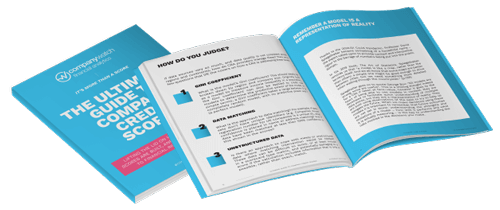What Are The Warning Signs of Business Insolvency?

It is easy to overlook business insolvency risk factors when you are not sure exactly what to watch out for. Companies have a tendency to attribute potential business insolvency indicators to temporary financial issues, when in reality, the problem may be more deep rooted. Having an understanding of potential problems could be the difference between good financial health and business insolvency.
A business may be at risk of falling into insolvency if there is a significant dip in sales and a simultaneous rise in expenses. The latter may arise from material costs, unexpected legal fees, or supply chain disruptions to name a few.
Company Watch has helped hundreds of companies understand their financial risk levels and reduce the risk of business insolvency.
In this blogpost, we cover:
What is business insolvency?
Business insolvency occurs when a company is unable to meet its financial obligations. Typically, this occurs when liabilities exceed assets, leading to a financial crisis. Insolvency is a major financial risk factor for businesses. The result is bankruptcy, liquidation, and other serious consequences.
Taking proactive measures to understand business insolvency and mitigate financial risk must be an integral part of companies’ management frameworks.
Key warning signs of business insolvency
Cash flow issues
According to Zippia, 82% of businesses fail because of cash flow issues. Cash flow is the movement of money into and out of a business and is one of the key indicators of company insolvency. Particularly, if a company is spending more money than it is earning, it may be facing a cash flow problem.
It is important to note that cash flow is not the same as revenue. Even if a business is turning a profit, it may face a negative cash flow. This can happen if a business scales up too quickly or is tied up in debt commitments that it is unable to repay.
Supply chain issues can also often lead to negative cash flow. In recent years, supply chain disruptions have become more common. This means that getting the product to the customer may take longer, which may in turn delay payments to the business owner.
Fortunately, foreseeing these challenges is not impossible. With the help of accurate information and reliable insolvency solutions, it is possible to pinpoint negative cash flow and prevent risky partnerships. Tools such as Forecast View™ allow you to stress test a company's future financial resilience under a wide range of customisable scenarios, such as ‘Margin Squeeze’ and ‘Decreased Demand’.
Rising debt
We touched upon this briefly in the previous section, however, it bears repeating that increased business debt with insufficient avenues for return is a big red flag when it comes to business insolvency. In the past year alone, bad debt levels have soared by about 61% for UK SMEs.
As bad debt builds up, creditors may also be less likely to extend loans to the business. This can directly impact operations. Eventually, being unable to receive more money to reduce financial distress may lead to business insolvency.
Winding up petitions
When a company's liabilities consistently outpace its assets, it can become increasingly challenging for it to meet its financial obligations. This can lead to a situation where the company is unable to repay its creditors, potentially triggering a winding up petition. A winding up petition is a legal process initiated by creditors to liquidate a company's assets and distribute the proceeds to satisfy outstanding debts.
Company Watch provides comprehensive monitoring of winding-up petitions (WUPAs) initiated against UK companies, including those not publicly advertised. Our advanced analytics enable us to identify potential business distress events an average of 61 days prior to their occurrence. This early warning system offers creditors and potential business partners a significant advantage in assessing risk and making informed decisions regarding lending or business partnerships.
Key takeaways
- Business insolvency occurs when liabilities exceed assets, leading to a financial crisis. It is a major financial risk factor for businesses.
- If a company is spending more money than it is earning, it may be facing a cash flow problem. Even if a business is turning a profit, it may face a negative cash flow.
- Rising debt can be a precursor to business insolvency, especially if a winding up petition is generated.

